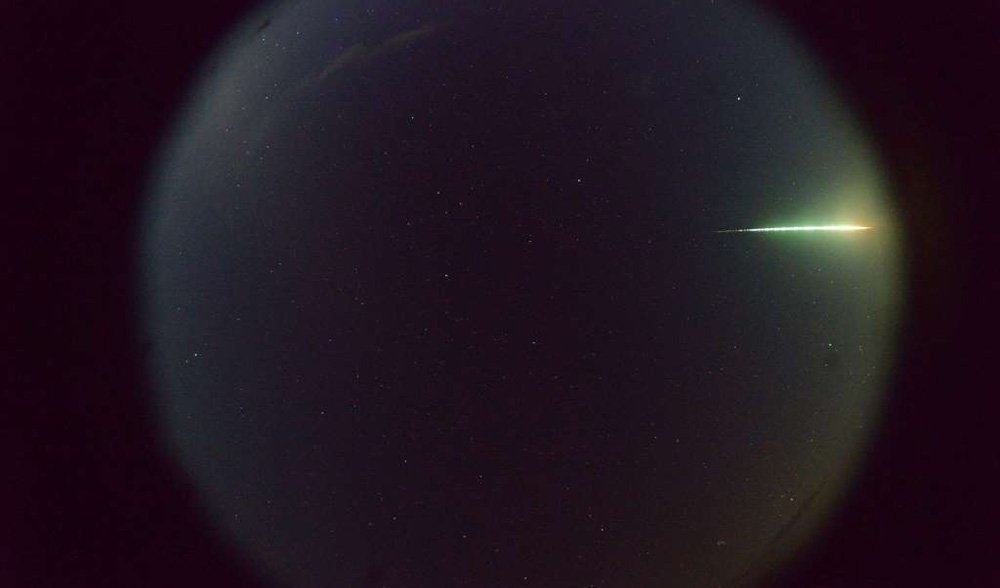Meteorite discovered in Lake Eyre

A TEAM OF Western Australian scientists celebrated their New Years by recovering a 1.7kg meteorite from Lake Eyre. It’s the first meteorite to be recovered thanks to a new network of cameras laid out across the outback.
Working with a team of researchers, Phil Bland, a planetary geologist from Curtin University, WA, was able to hand-dig the meteorite out of a 42cm-deep hole in a remote muddy section of Lake Eyre, just before approaching rains would have obscured its location.
“It was an amazing team effort – we got there by the skin of our teeth,” Phil said.
The meteorite was seen searing through the skies at around 9.15pm on 27 November 2015. The recovery involved team members from the Desert Fireball Network analysing images, and using dynamic calculations to triangulate a position of the fall site.
Once a searchable area was located, a three day intensive search was carried out, involving an aerial spotter (piloted by William Creek local Trevor Wright), a remotely operated drone, two researchers working on the lake’s surface, and guidance around the area by local Arabana men Dean Stuart and Dave Strangways.

The image captured by the William Creek Desert Fire Network camera on 27 November 2015 at 10:43 UTC .
Meteorite older than Earth
This meteorite is the first to be recovered with help from the Desert Fireball Network, a series of 32 camera observatories spread across South Australia and Western Australia.
The camera captured the meteorite’s “greenish burn” for about about six seconds before it stopped burning at about 18km above the Earth’s surface, and fell at a steep angle down to the middle of Kati Thanda-Lake Eyre South.
Capturing this meteorite on camera allowed researchers to determine its orbit and which parent asteroid it might have come from. The meteorite is one of only 20 in the world with a known orbit and is believed to have originated from an orbit between Mars and Jupiter. According to the reserach team, the meteorite is older than the Earth itself, and provides an example of material created during the early formation of the Solar System more than 4.5 billion years ago.
“This recovery will be the first of many, and every one of those meteorites will give us a unique window into the formation of the Solar System,” said Phil.
NASA and other space agencies have spent billions on sending rockets to asteroids in order to bring a sample back. This proof of concept shows that the cost of retrieval could be significantly less.
Phil and his team have already identified 10 other meteorite fall sites.




